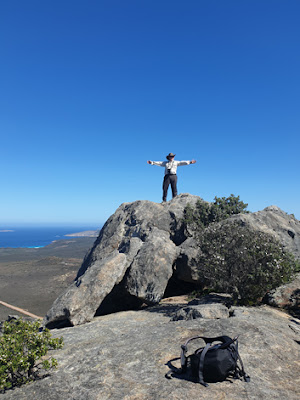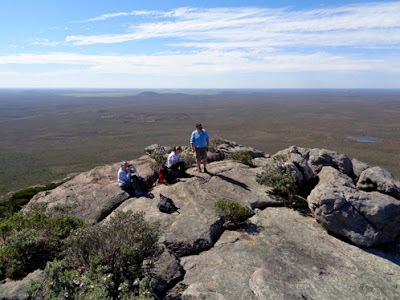Road trip
I'm always saying it but sorry once again for the delay in getting the old blog updated. I blame work which is a bit full-on at the moment and is leaving me somewhat exhausted. Of course this is entirely my own fault as nothing we do at work is remotely important in the grand scheme of things.
It's now been two months since my parents came to visit and we set off on the great road trip across the bottom of Australia. Flying into Adelaide we picked up a car and after a couple of days based in Glenelg (my favourite palindromic suburb) we headed west to the Bight and Ceduna and then on across the Nullarbor. And because I had other people with me I couldn't be bothered taking any pictures and so the fabulous photos you see in the following posts are taken by Dad and Emily.
We stayed at a couple of road houses and two nights at the Eyre Bird Observatory before continuing towards Kalgoorlie where we visited the rather impressive 'Super Pit' gold mine. We then dropped back down to the south coast at Esperance before staying a few nights in Albany and then flying back from Perth. Just over two weeks all up.
'Super Pit', Kalgoorlie
Frenchman's Peak, Cape Le Grand
The Nullarbor is, perhaps surprisingly, not the desolate and isolated place you might think. A good road all the way with regular road houses and fuel stops made travel very easy.
Major Mitchell's Cockatoo
It's also a bit of a misnomer. There are loads of trees on the Nullarbor. Apart from some spectacular flat open plains on the eastern side of things, there's plenty of vegetation and topography providing changing scenery throughout.
The biggest problem was probably keeping track of the time zones. They're not full hours and some of them aren't even official. Adelaide was half-an-hour behind Sydney - weird but ok. Heading west you then come across the bizarre and unofficial Australian Central Western Standard Time which lasts for 350km across the Nullarbor and was 45 minutes behind Adelaide. In the middle of this zone the Eyre Bird Observatory operated it's own independent time zone which was 15 minutes ahead of ACWST.
SW WA
Back on the road and leaving the Nullarbor gets you into the general Western Australia time-zone which was another hour back and so an hour-and-a-half behind Adelaide and 2 hours behind Sydney. Simple!
It appears that this series of posts may be too large to appear together is some instances and so if this is the case then please check out the individual links on the right-hand-side under 'Recent Posts' to see our exciting adventures with 'The wildlife', 'The golf', 'The caches', and 'The mountains'.
















































